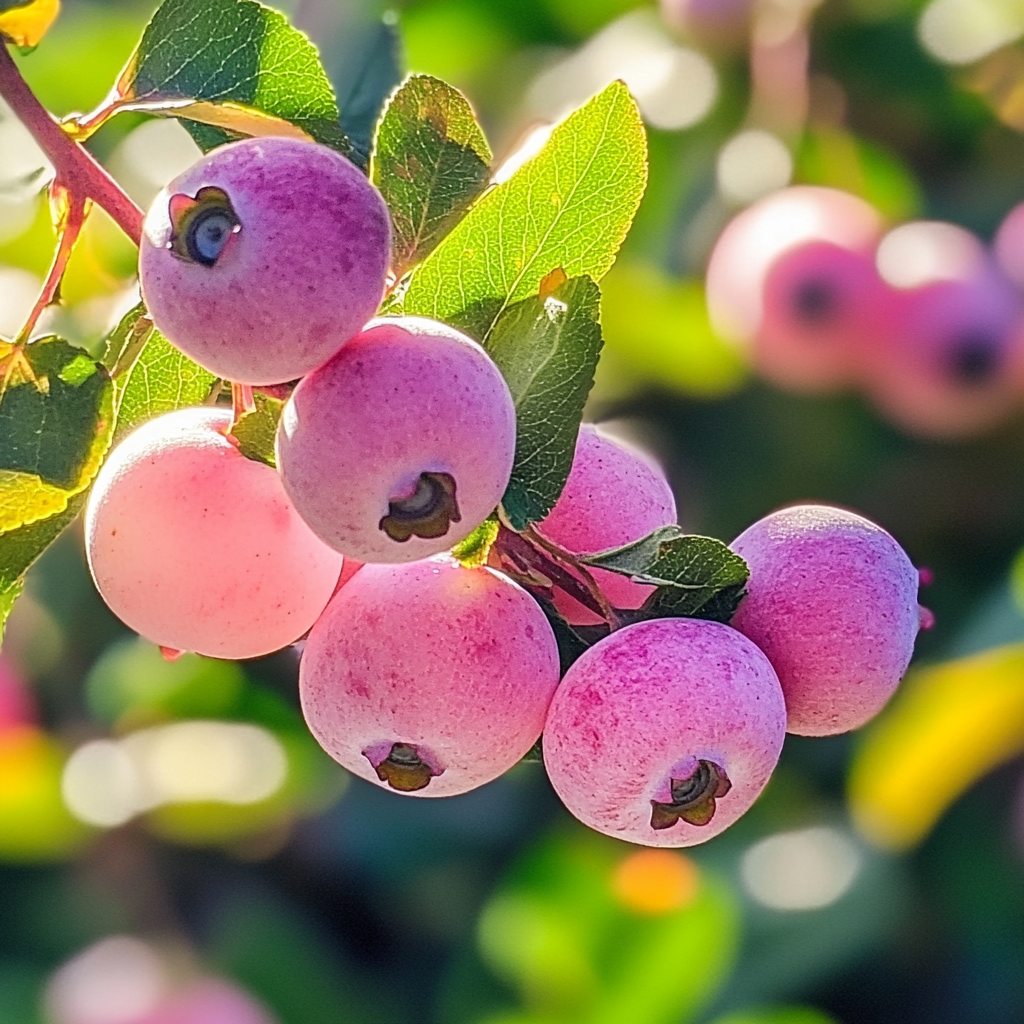Blueberry Pink Lemonade is a vibrant twist on traditional blueberries. Known for its bright pink berries and exceptionally sweet flavor, this unique fruiting shrub has quickly gained popularity among gardeners and berry enthusiasts. Whether you’re growing it for its ornamental value or to enjoy its delicious fruit, Blueberry Pink Lemonade offers both beauty and bounty.
In this guide, we explore why Blueberry Pink Lemonade is worth growing, how to care for it, and what sets it apart from other blueberry varieties. You’ll also find answers to common questions and expert growing tips.
Don’t miss our Blueberry Compote Recipe to see how both pink and traditional blueberries can be transformed into a flavorful treat.
Table of Contents
Table of Contents
What is Blueberry Pink Lemonade?
What Makes Pink Lemonade Blueberries Unique?
The Blueberry Pink Lemonade bush is unlike any ordinary blueberry plant. Instead of the classic deep blue, this cultivar produces rosy-pink berries with a citrusy-sweet flavor. Developed from rabbiteye blueberries, this hybrid is prized for its appearance and taste.
Beyond its stunning fruit, the Blueberry Pink Lemonade plant blooms with soft white-pink flowers in spring and bursts into vibrant red foliage in fall—making it both an edible and ornamental favorite.
History and Cultivation Origins of Pink Lemonade Blueberries
Blueberry Pink Lemonade was developed by the USDA in the early 2000s by crossbreeding selected rabbiteye varieties. The goal was to produce a bush that had high ornamental value and produced incredibly sweet berries. Since its release, it’s been a go-to option for gardeners seeking something colorful, unique, and easy to grow.
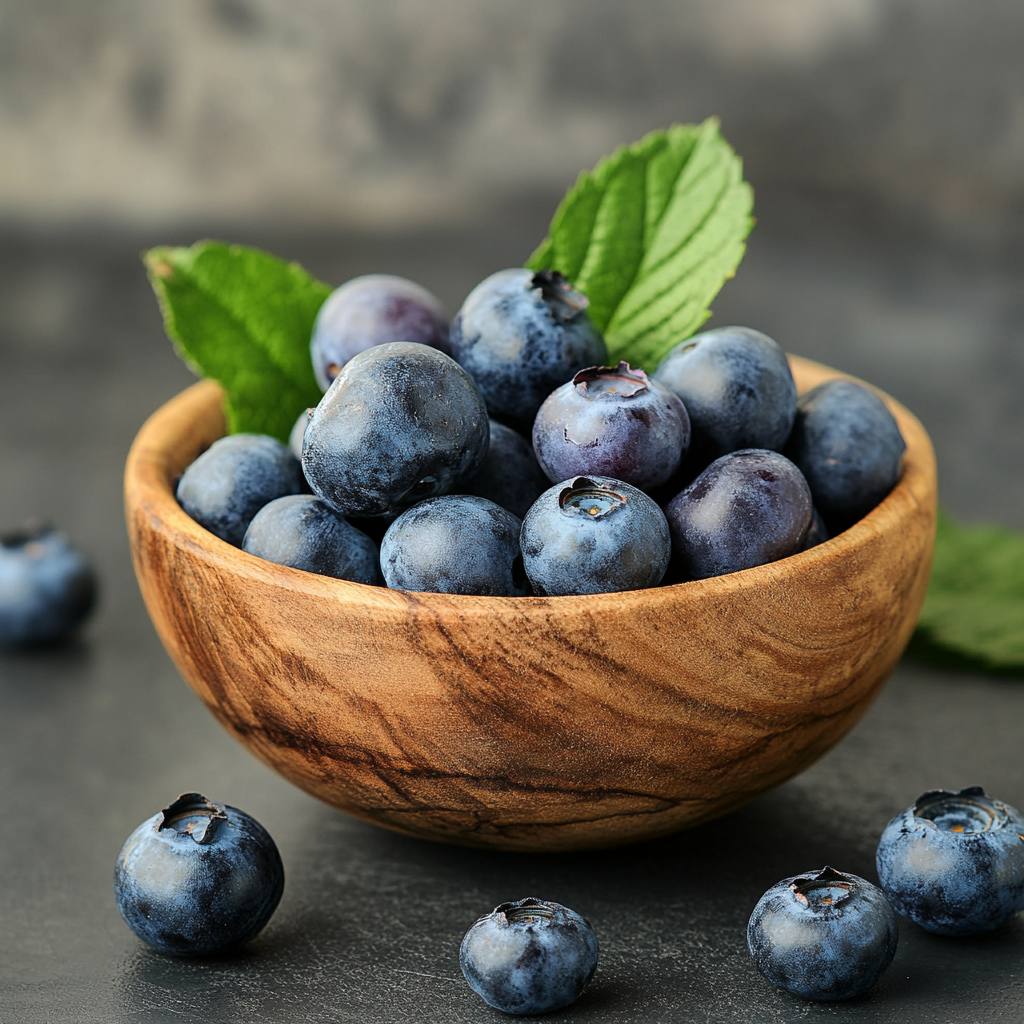
Are Pink Lemonade Blueberries Good?
Flavor Profile and Texture of Pink Lemonade Blueberries
There’s no doubt that Blueberry Pink Lemonade is one of the tastiest blueberry cultivars available. The berries are less tart and noticeably sweeter than standard types. With their crisp bite and citrus-like undertones, they’re perfect for snacking, baking, or adding to fruit salads.
Looking for dessert ideas? Try recipes like our Easy High Protein Desserts for creative ways to enjoy this sweet fruit.
Nutritional Benefits Compared to Regular Blueberries
In addition to its standout flavor, Blueberry Pink Lemonade is packed with essential nutrients like vitamin C, fiber, and antioxidants. While the pink color may suggest otherwise, it still delivers much of the same health benefits as classic blueberries—supporting immune health, digestion, and heart function.
Are Pink Lemonade Blueberries Rare?
Availability in the U.S. and Other Regions
Yes, Blueberry Pink Lemonade is still relatively rare, especially in big-box garden centers and supermarkets. It’s more commonly found through online plant shops and specialized nurseries. Its popularity is growing fast, but it hasn’t yet reached the commercial scale of traditional varieties.
Why They’re Considered a Specialty Variety
Several reasons contribute to the rarity of Blueberry Pink Lemonade: limited farming, unique growing needs, and its relatively recent development. Most growers plant it for personal use rather than for large-scale harvests. Its eye-catching color, sweet taste, and garden appeal make it a standout specialty fruit.
Check out Grilled Chicken with Avocado to explore savory meals that pair well with fruity ingredients like blueberries.
Print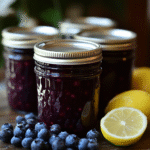
Blueberry Pink Lemonade Jam
- Total Time: 35 minutes
- Yield: 2 small jars
- Diet: Vegan
Description
This Blueberry Pink Lemonade Jam is a sweet, citrusy twist on traditional blueberry preserves. Made with fresh Pink Lemonade blueberries, it’s perfect for spreading on toast, stirring into yogurt, or gifting to friends. Easy, fast, and bursting with flavor!
Ingredients
– 2 cups Blueberry Pink Lemonade berries (fresh or frozen)
– 1 cup granulated sugar
– 1 tablespoon lemon juice (freshly squeezed)
– 1/2 teaspoon pure vanilla extract
Instructions
1. In a saucepan over medium heat, mash the Blueberry Pink Lemonade berries with a spoon or potato masher.
2. Add sugar and lemon juice. Stir continuously until the sugar is fully dissolved.
3. Let the mixture simmer for 20–25 minutes, stirring occasionally.
4. Once thickened, remove from heat and stir in vanilla extract.
5. Allow to cool slightly before pouring into sterilized jars. Seal and refrigerate.
6. Jam will continue to thicken as it cools.
Notes
– For thicker jam, add 1/2 tsp pectin.
– Jam lasts up to 3 weeks in the fridge.
– Great for gifting or freezing for later.
- Prep Time: 10 minutes
- Cook Time: 25 minutes
- Category: Jam, Blueberry Recipes, Homemade Preserves
- Method: Stovetop
How Tall Does a Blueberry Pink Lemonade Bush Grow?
Typical Growth and Spread Dimensions
The Blueberry Pink Lemonade bush reaches a mature height of about 4 to 5 feet tall with a similar spread, making it an excellent mid-sized shrub for garden beds, borders, or containers. Unlike some highbush varieties that grow large and unruly, this cultivar maintains a compact and manageable size, perfect for both urban and rural home gardens.
Its upright shape and dense foliage also make it useful as a natural screen or hedge, while still being easy to harvest when the berries ripen in late summer.
When and How Fast It Reaches Maturity
Blueberry Pink Lemonade typically takes about 2 to 3 years to begin producing a reliable crop of berries. In its first year, the plant focuses on root development. By year two, you may get a small handful of berries, with full fruiting potential achieved by year three or four. Peak fruiting generally occurs from late July through September depending on your USDA zone.
Don’t miss our flavorful Crispy Rice Sushi Bake for a fun recipe idea you can enhance with fresh pink blueberries.
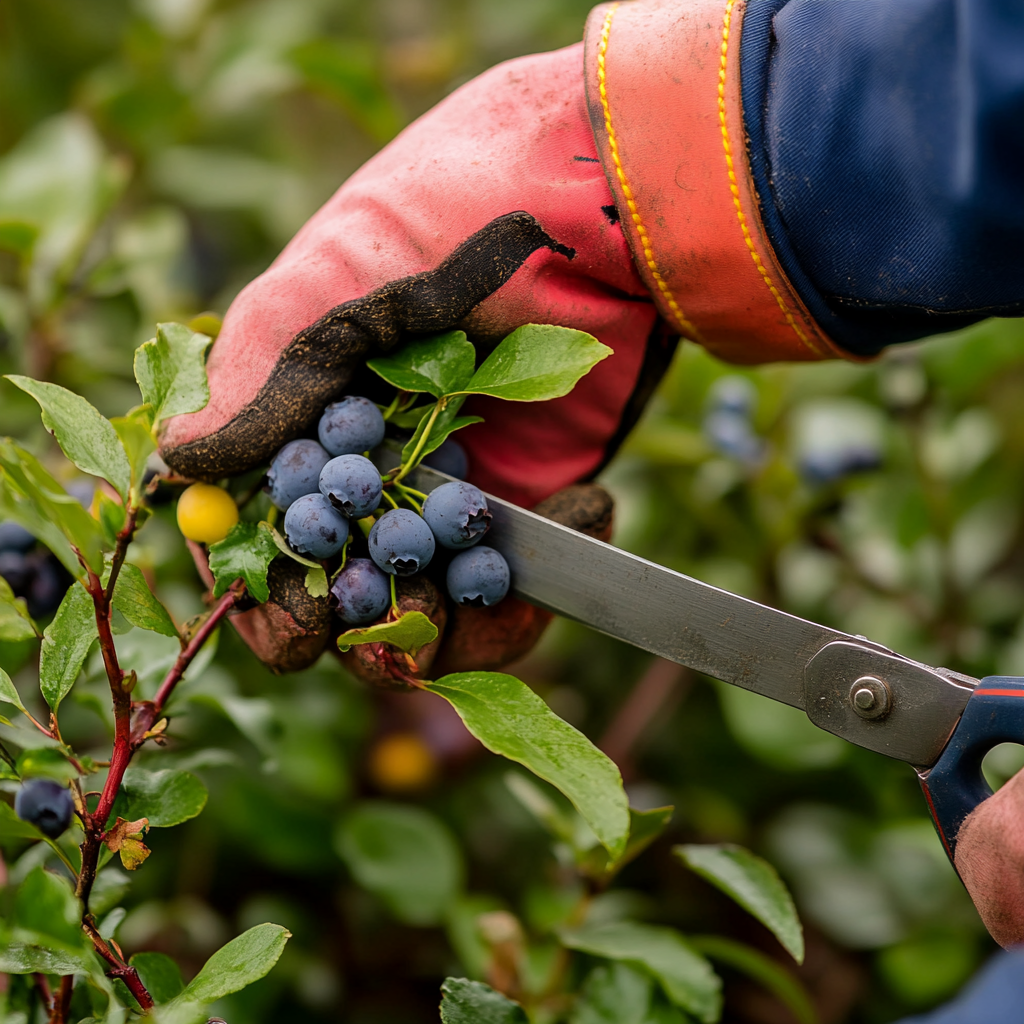
How to Care for Pink Lemonade Blueberry Bush
Ideal Soil, Sunlight, and Climate Conditions
Blueberry Pink Lemonade thrives in acidic soil with a pH range of 4.5 to 5.5. The soil should be well-drained, rich in organic matter, and consistently moist—though not waterlogged. Raised beds or containers are great options if your native soil doesn’t meet these requirements.
Full sun is essential. Make sure your bush receives at least 6 to 8 hours of direct sunlight daily for maximum flowering and fruiting.
As for climate, this variety is best suited to USDA zones 4 through 8, making it adaptable to a range of temperatures, from cool northern states to warmer southern regions.
Watering, Pruning, and Fertilization Tips
- Watering: Deep, consistent watering is key—especially in the fruiting season. Avoid letting the soil dry out completely.
- Pruning: In late winter, prune old or weak canes to promote airflow and encourage strong new growth.
- Fertilizing: Use a fertilizer formulated for acid-loving plants, like those made for azaleas or rhododendrons. Apply in early spring and again after flowering.
With proper care, Blueberry Pink Lemonade can live and produce fruit for 10 to 20 years or more, making it a long-term investment for your edible landscape.
Is Blueberry Pink Lemonade Edible and How to Eat It
Safety and Edibility of the Pink Variety
Yes—Blueberry Pink Lemonade is 100% edible. Despite its unconventional color, it’s safe and healthy to consume. It’s not a genetically modified plant but rather a naturally developed hybrid through traditional crossbreeding methods.
These berries are enjoyed just like regular blueberries—raw, baked, or blended. Their soft, thin skin and incredibly sweet interior make them irresistible to kids and adults alike.
Ways to Use Pink Lemonade Blueberries in Recipes
Here are a few mouthwatering ways to use your Blueberry Pink Lemonade harvest:
| Recipe Idea | Description |
|---|---|
| Pink Lemonade Berry Muffins | Sweet, colorful muffins that pop with flavor |
| Garden Berry Salad | Mix with greens, goat cheese, and pecans |
| Pink Lemonade Jam | Homemade preserve that’s sweet, tangy, and spreadable |
| Breakfast Smoothies | Blend with banana, Greek yogurt, and a splash of lemon |
| Cookie Mix-ins | Add to cookie dough like our Crumbl Chocolate Chip recipe |
These recipes showcase the versatility of this fruit—whether you’re hosting brunch, meal-prepping snacks, or just craving a burst of berry sweetness.
What is the Sweetest Blueberry and How Pink Lemonade Compares
Top Sweet Blueberry Varieties
When it comes to sweetness, not all blueberries are created equal. Several varieties are known for their sugar-rich flavor. Here are some of the sweetest:
- Top Hat – A dwarf variety with tiny berries and concentrated sweetness
- Sweetheart – Early bloomer with sugar-packed fruits
- Legacy – Well-known for a balance of sweet and tart
- Pink Lemonade – Exceptionally sweet with mild acidity and citrus notes
Among them, Blueberry Pink Lemonade consistently ranks as one of the sweetest due to its low acidity and natural fruit sugars. Many gardeners grow it specifically for its flavor, even over more common varieties.
Why Pink Lemonade is Among the Sweetest
Thanks to its rabbiteye lineage and selective breeding, Blueberry Pink Lemonade contains a higher sugar-to-acid ratio than standard blueberries. The result? A smooth, honey-like flavor that doesn’t need added sugar.
It’s ideal for fresh snacking, jams, and dessert recipes that call for naturally sweet fruit—no need to mask tartness.
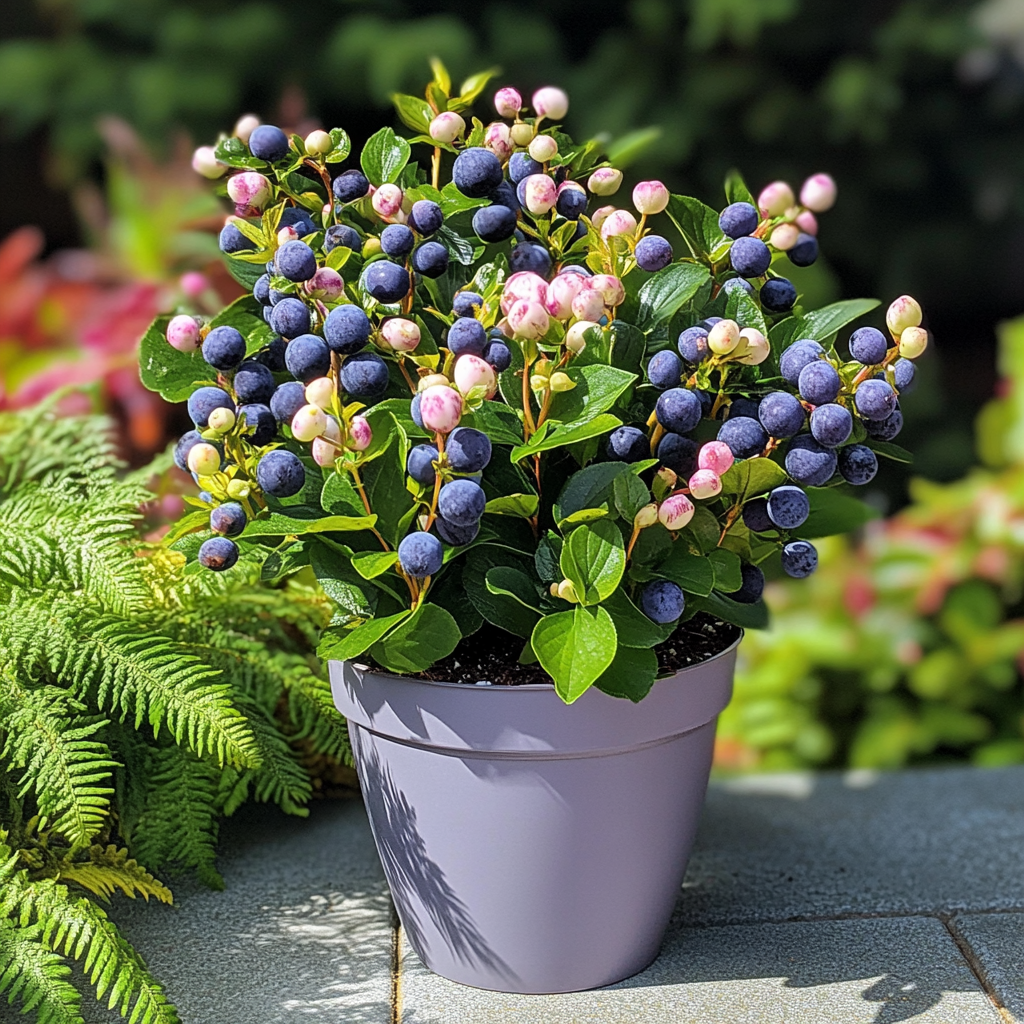
How to Grow Blueberry Pink Lemonade at Home
Planting from Bush vs. Seeds
While it’s possible to grow Blueberry Pink Lemonade from seed, it’s highly recommended to start with a nursery-bought bush. Here’s why:
| Method | Pros | Cons |
|---|---|---|
| Bush/Plant | Quick fruiting (2–3 years), reliable genetics | Slightly more expensive upfront |
| Seeds | Inexpensive, educational | Unpredictable traits, longer wait time (5+ years) |
Nursery bushes are usually 1–2 years old and ready for planting directly in the ground or in containers.
Container Gardening Tips and Companion Planting
Blueberry Pink Lemonade grows beautifully in pots, making it perfect for patios and balconies. Use a 5- to 10-gallon container, acidic soil mix, and ensure proper drainage.
Companion plants like azaleas, heathers, and ferns thrive in similar soil pH and make great garden companions. Avoid planting near alkaline-soil plants like tomatoes or rosemary.
Looking for inspiration? Try pairing your fresh berries with Crispy Rice Sushi Bake for a colorful culinary twist.
Common Issues and Troubleshooting
Common Pests and Diseases
Like other blueberries, Blueberry Pink Lemonade can attract some unwanted attention:
- Birds – Use netting to protect ripening fruit
- Aphids and mites – Spray neem oil or insecticidal soap
- Root rot – Ensure soil drains well; never allow standing water
These issues are usually manageable with consistent care and garden hygiene.
Yellow Leaves, Low Yield, and Other Care Concerns
If your Blueberry Pink Lemonade bush shows yellowing leaves or low berry production, consider these quick fixes:
- Yellow Leaves → Check pH (likely too high), amend soil with sulfur
- Low Yield → Insufficient sunlight or over-pruning
- No Blossoms → Check fertilizer (avoid high-nitrogen formulas)
For more on traditional comfort foods that balance sweet and savory, don’t miss our Corned Beef and Cabbage recipe.
Why Blueberry Pink Lemonade Belongs in Your Garden
Whether you’re a seasoned gardener or a beginner looking to grow something unique, Blueberry Pink Lemonade checks all the boxes. It’s visually stunning, highly productive, easy to grow, and exceptionally sweet.
From understanding its rarity and growth habits to knowing how to care for it year-round, you now have the tools to enjoy this delightful fruit in your own backyard.
Don’t miss our Corned Beef and Cabbage recipe to discover more flavorful garden-to-table dishes that pair beautifully with sweet and savory components.
Are Pink Lemonade blueberries good?
Yes! Blueberry Pink Lemonade berries are known for their intensely sweet flavor with light citrus notes. They have a pleasant texture, thin skin, and juicy interior—perfect for eating fresh, baking, or adding to desserts.
Are Pink Lemonade blueberries rare?
They are considered rare compared to traditional blueberries. Because they’re a specialty cultivar and not mass-produced commercially, Pink Lemonade bushes are most often found at garden centers or ordered online.
How tall does Pink Lemonade blueberry grow?
A Blueberry Pink Lemonade bush typically grows between 4 to 5 feet tall, with a similar spread. It’s compact enough for small gardens and container planting, making it ideal for backyard growers.
How to care for Pink Lemonade blueberry bush?
To care for this variety, plant it in acidic, well-drained soil, and ensure it gets at least 6 hours of sunlight daily. Water consistently, prune annually in late winter, and use fertilizer designed for acid-loving plants.
Is Blueberry Pink Lemonade edible?
Absolutely. The Blueberry Pink Lemonade is not only edible but also one of the sweetest blueberry varieties available. The berries are great for fresh eating, jams, muffins, and smoothies.
What is the sweetest blueberry?
While there are several sweet varieties like Legacy and Sweetheart, Blueberry Pink Lemonade is among the sweetest. Its low acidity and high sugar content give it a dessert-like quality straight from the bush.
For more FAMILLY recipes, Follow us on: Facebook, Pinterest.
